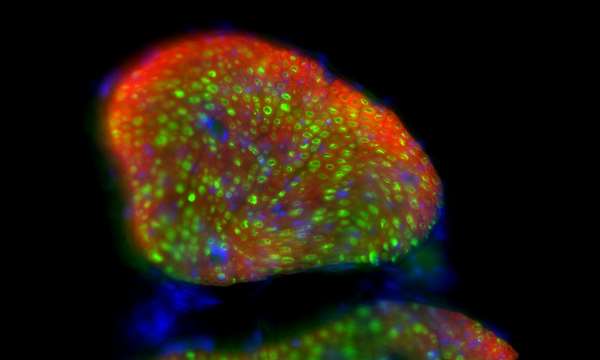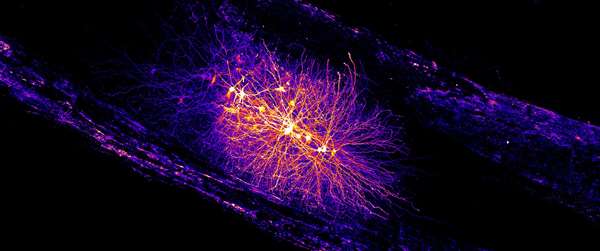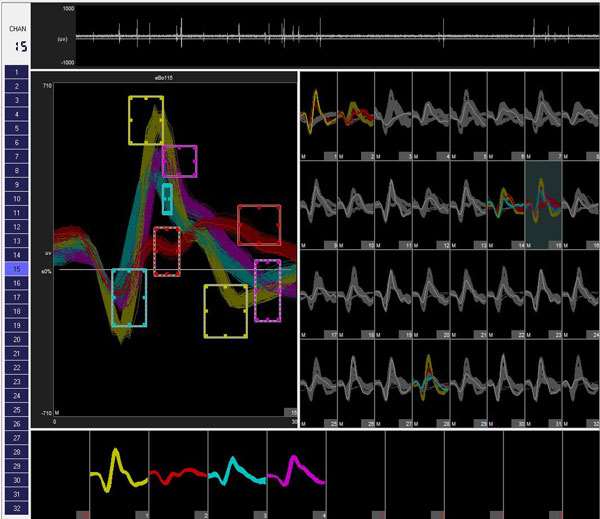Neural Engineering & Modulation Lab Research
Research at the Neural Engineering & Modulation Laboratory at the Marquette University and Medical College of Wisconsin Joint Department of Biomedical Engineering is interested in advancing neuroprosthetic and viral gene therapy techniques in the peripheral nervous system that allow optical stimulation and restoration of paralyzed muscle activity. Using multi-modal brain recording and stimulation technologies, the NEMo Lab works to advance neuroprosthetic system capabilities and build a better understanding of the underlying relationships between different scales of recorded neural signals. The research interests of this lab are fueled by a desire to fulfill a complementary circle of basic neuroscience investigation and translational neural engineering application in which discovery in one area opens up new avenues for investigation or advancement in the other.
Active Research
The NEMo Lab is currently investigating two separate lines of interest: Peripheral Motor Optogenetics/Gene Therapy and Multimodal, Optogenetic Brain-Computer Interfaces.
Peripheral Motor Optogenetics/Gene Therapy
The NEMo Lab is working to develop techniques that enhance and prolong viral transduction of the peripheral nervous system with the initial goal of robustly expressing light-sensitive ion channels (i.e., opsins) in motor nerves, allowing researchers to optically stimulate muscle activity as an alternative to electrical stimulation for reanimation of limbs paralyzed by conditions such as spinal cord injury. These experiments generally begin with injection of an opsin+fluorescent marker expressing virus—such as adeno-associated virus (AAV) vector—into a targeted muscle or nerve, followed by an incubation period to allow the virus to express its gene products, and finally periodic evaluation of opsin expression along the targeted nerve using a color-specific laser or LED light source. While optically stimulating the nerve, electromyographic (EMG) activity and muscle forces from the target muscle are recorded. We employ a combination of viral gene therapy injections, optical stimulation, electrophysiology, histology in slices and whole cleared tissues, and physiological and behavioral measures to examine the efficacy of this technology in modulating or rehabilitating motor function in health and injury.
Representative Publication
Williams JJ, Watson AM, Vazquez AL, Schwartz AB. Viral-Mediated Optogenetic Stimulation of Peripheral Motor Nerves in Non-Human Primates. Front Neurosci. 2019;13:759 PMID: 31417342 PMCID: PMC6684788 08/17/2019


Images
Top: Histological image of the cross-section of a transgenic rodent nerve expressing channel-rhodopsin (ChR2, green) in axonal membranes surrounded by myelin (red)
Bottom: Lightsheet microscopy image of a whole, optically cleared rodent spinal cord
Multimodal, Optogenetic Brain-Computer Interfaces
The NEMo Lab is interested in brain recording and stimulation modalities for advancing brain-computer interface (BCI) technology. A number of cortical signal recording modalities have been investigated as control signals for BCI systems—including single-unit or multi-unit activity (SUA/MUA), LFPs, ECoG, and EEG—each measuring a different scale of neural activity. Researchers have typically focused on the use of one modality independently of other possible signals for BCI use, emphasizing that signal’s strengths over the drawbacks of others while ignoring potential synergistic applications with other modalities. However, recent research efforts in the NEIMO Lab suggest that different signal modalities may be better suited for different components of a BCI framework than others, such as decoding finely graded movement parameters (e.g., SUAs) or deciphering attentional and task states (ECoG/EEG). In addition, the fundamental relationships between these signal modalities are not well understood. Investigators at the NEIMO Lab are looking to utilize multi-scale BCI paradigms as well as optogenetics to interrogate the fundamental relationships between these signal modalities.
Image
Example of sorted, multiunit spiking activity captured by an intracortical microelectrode array.


